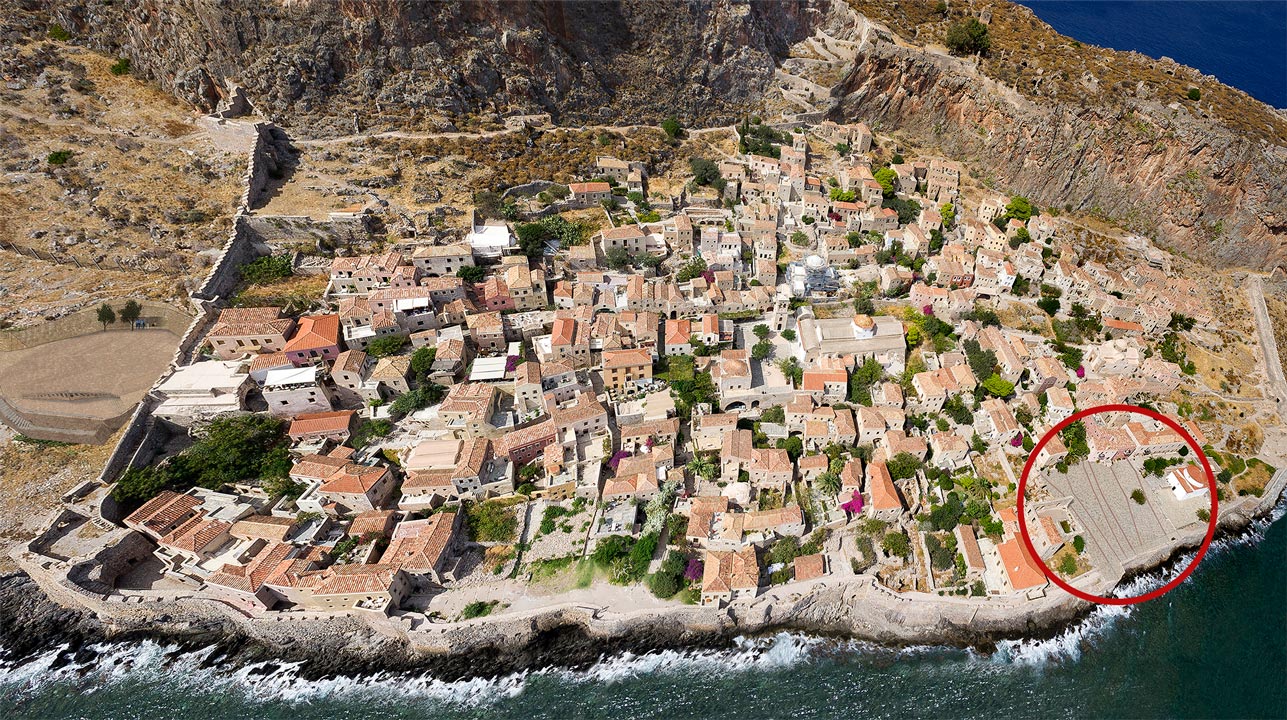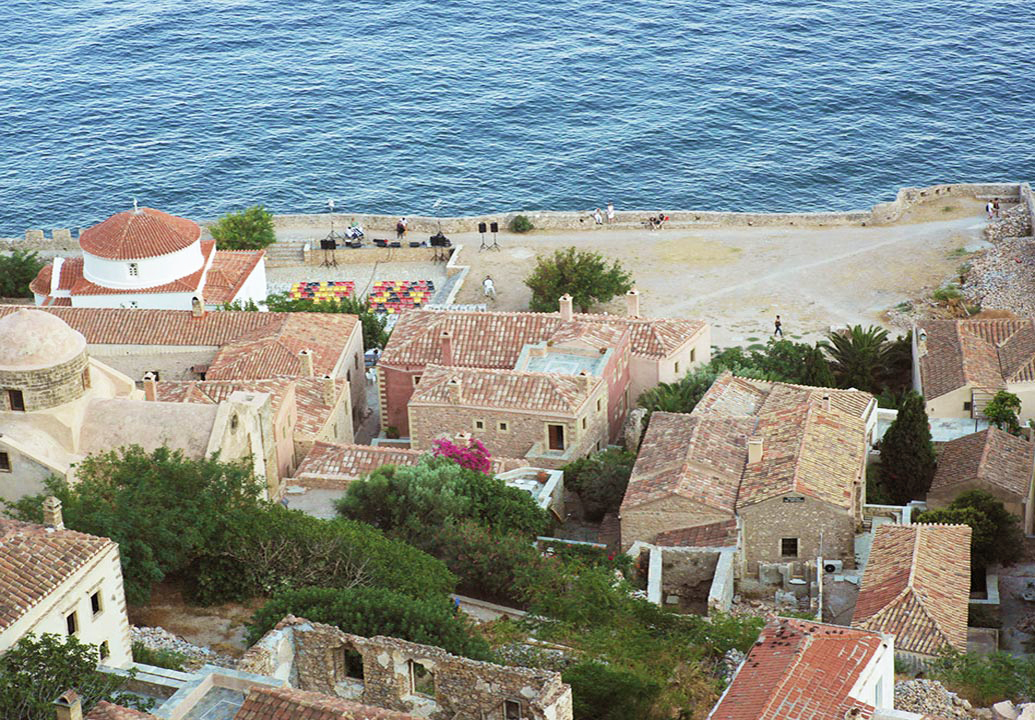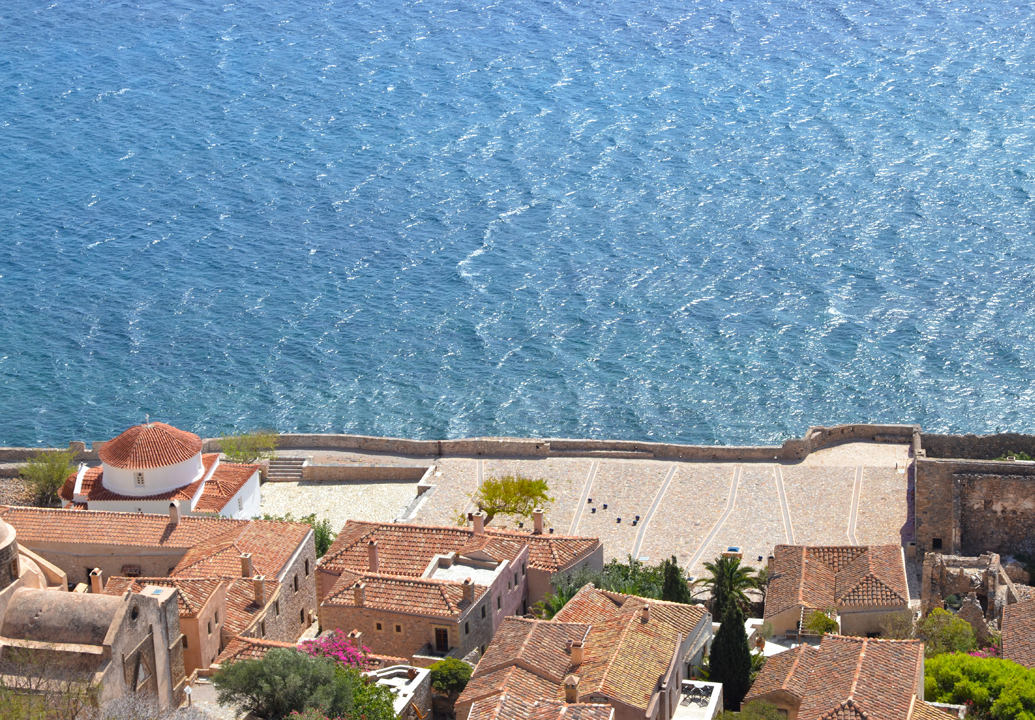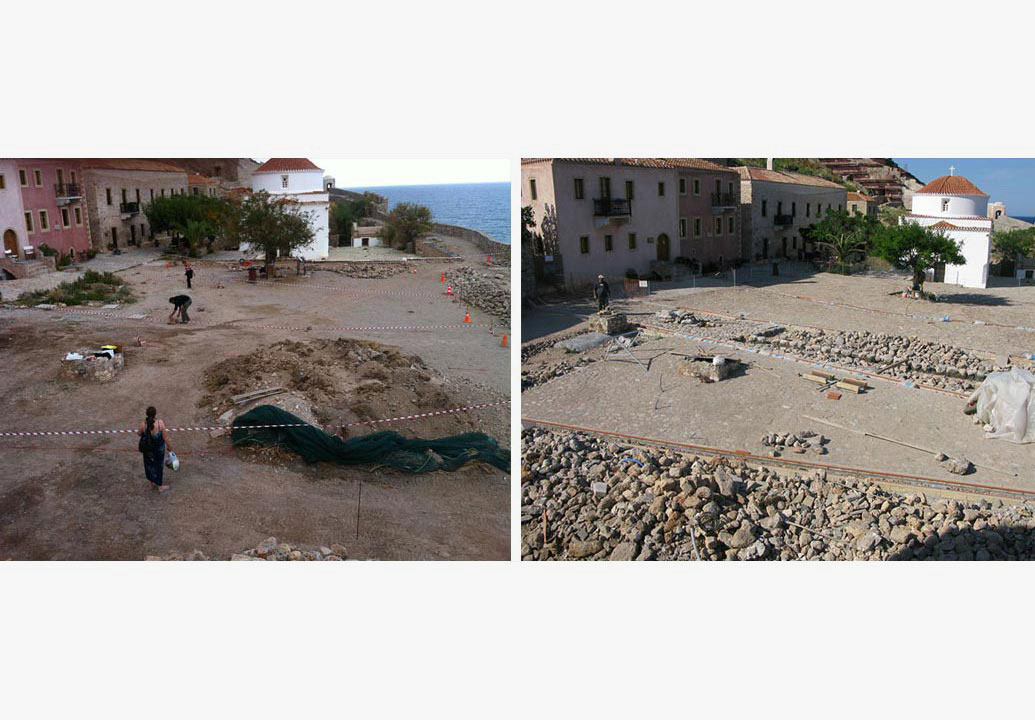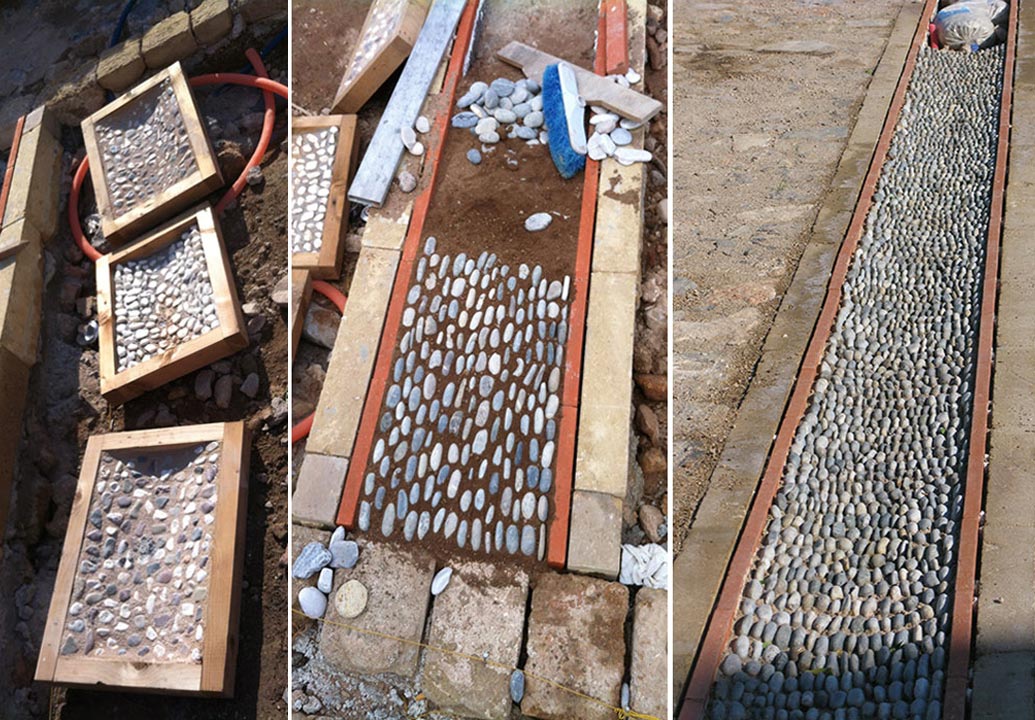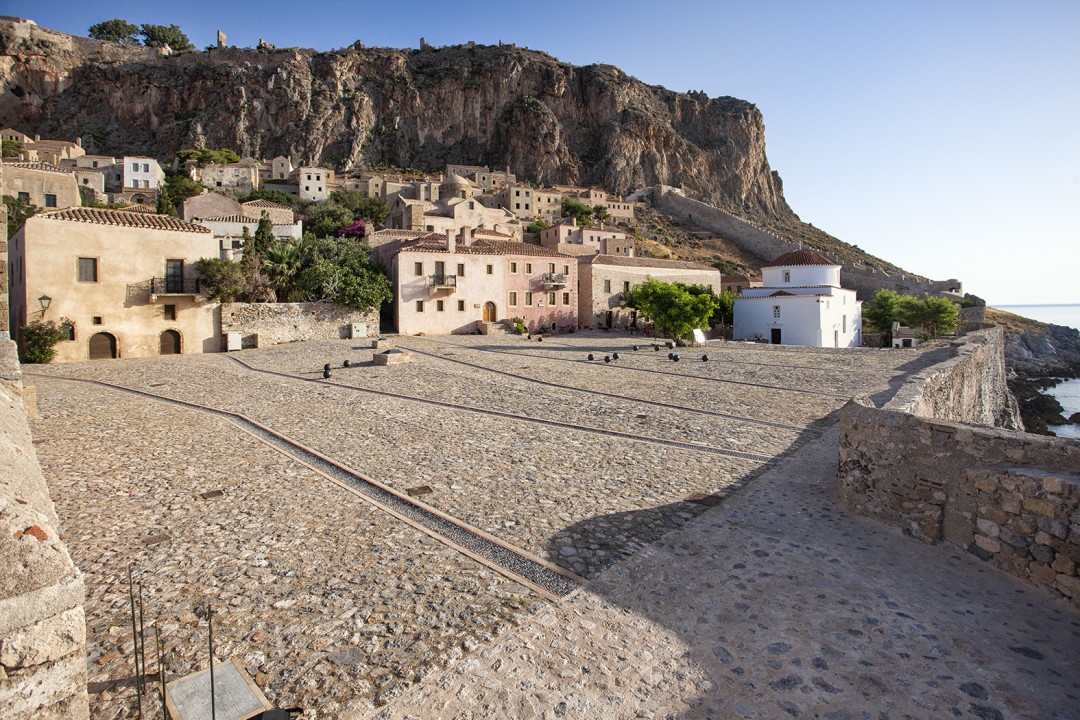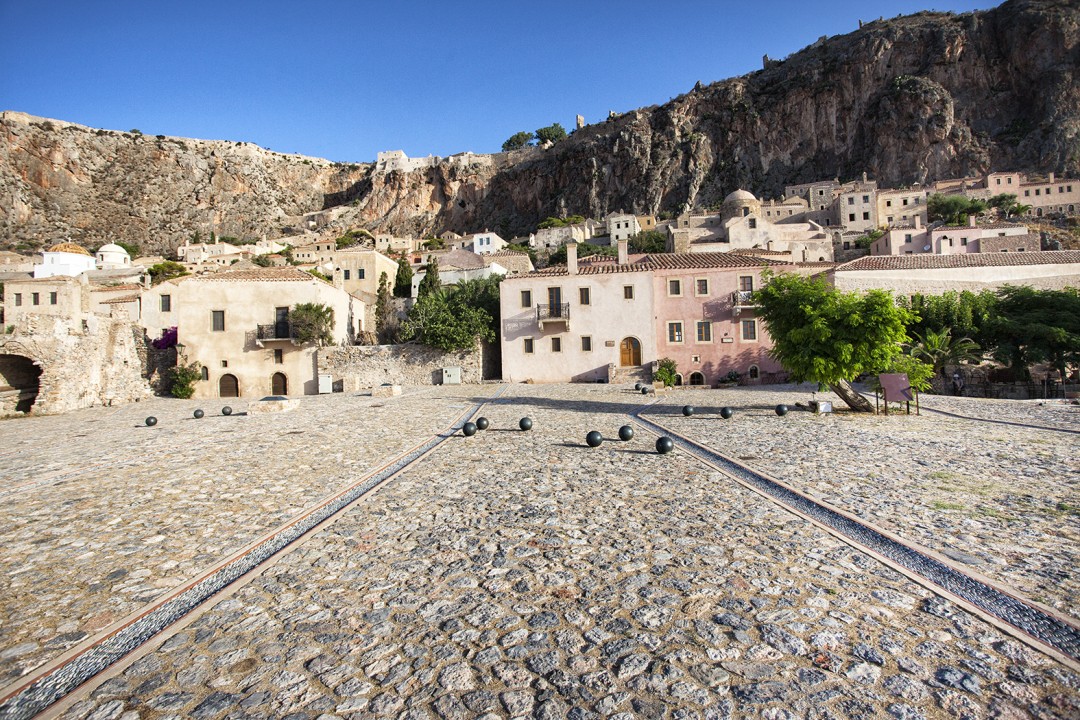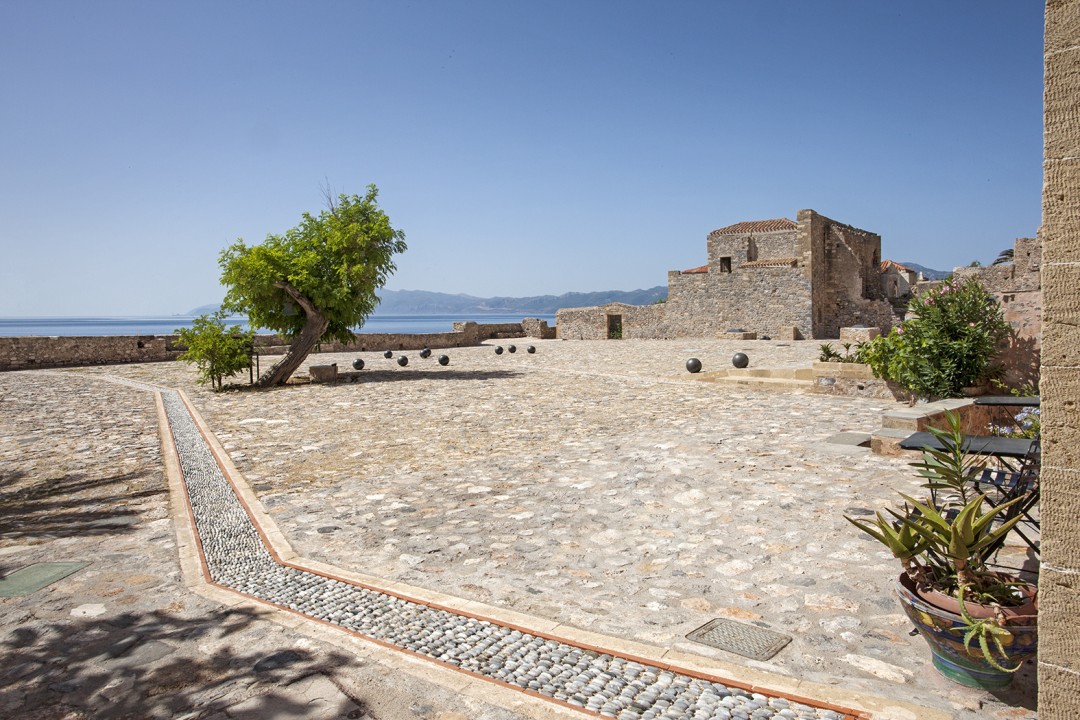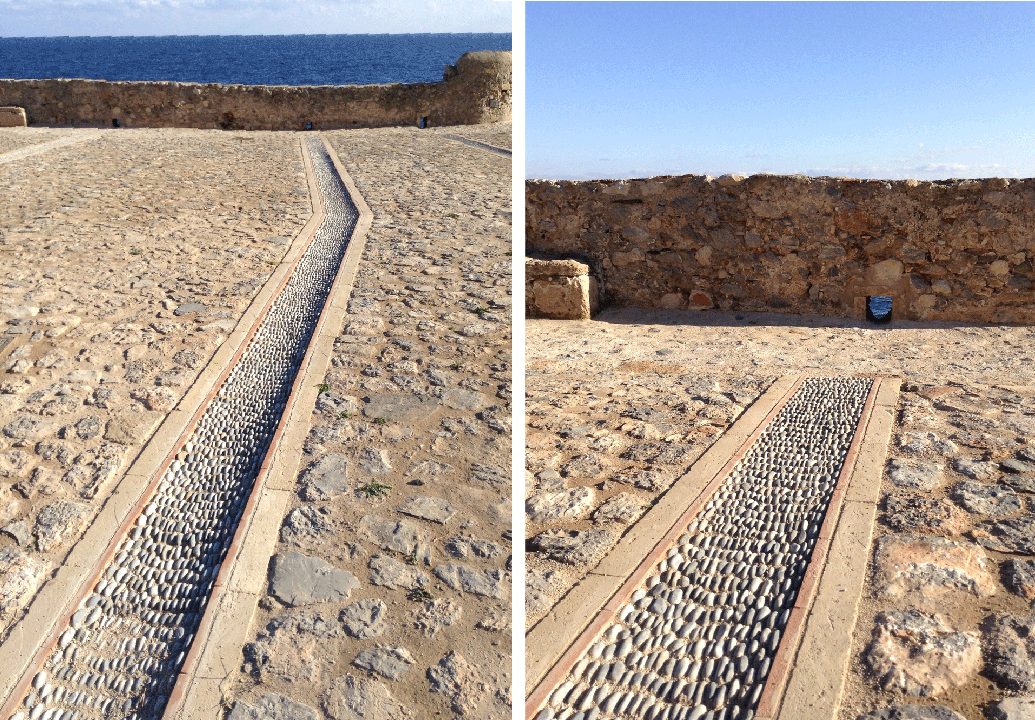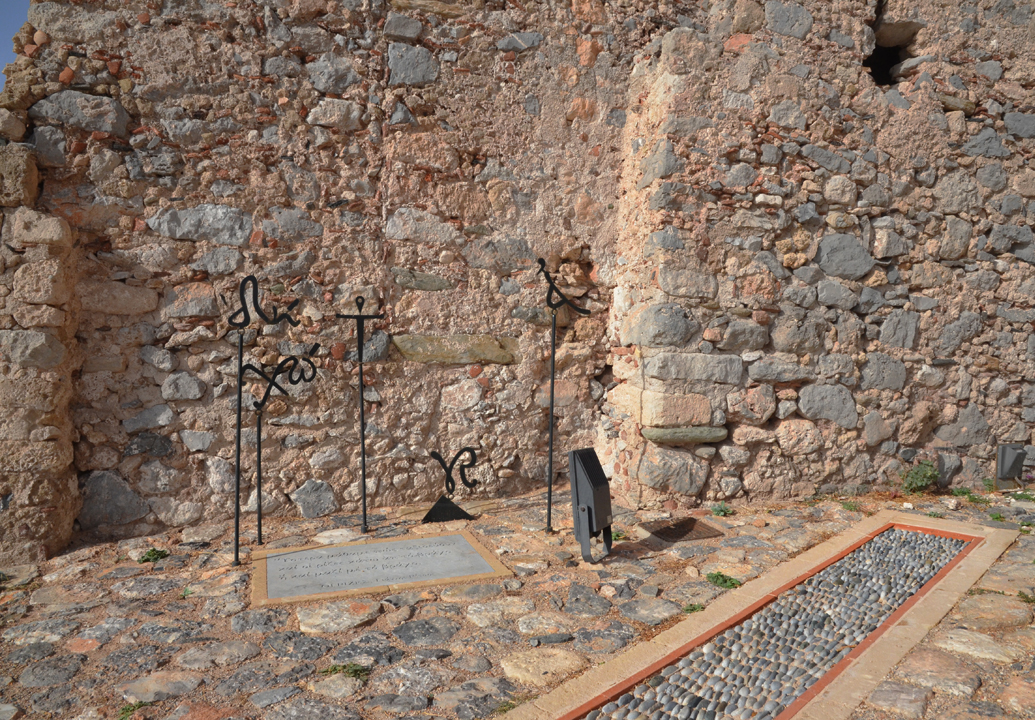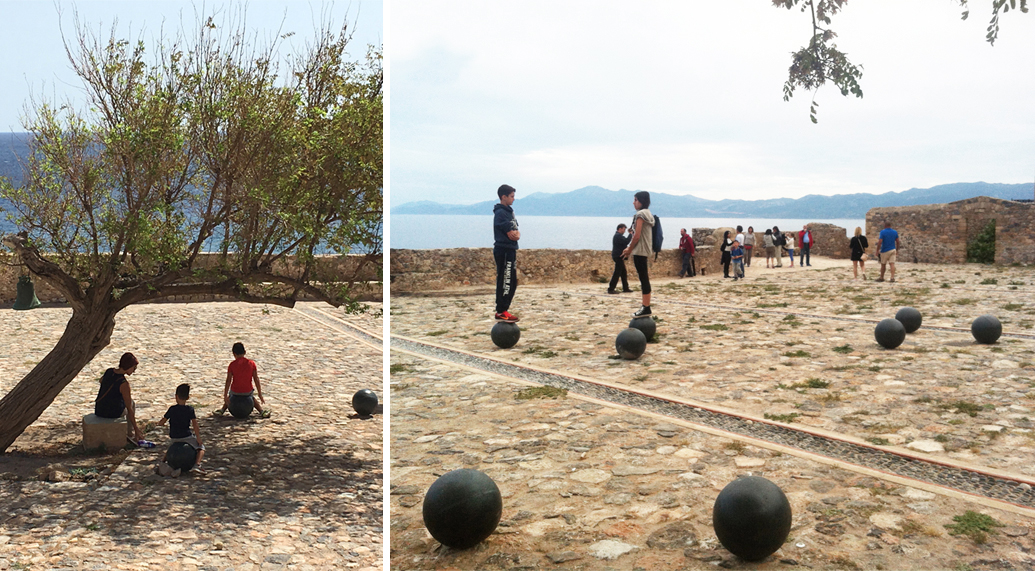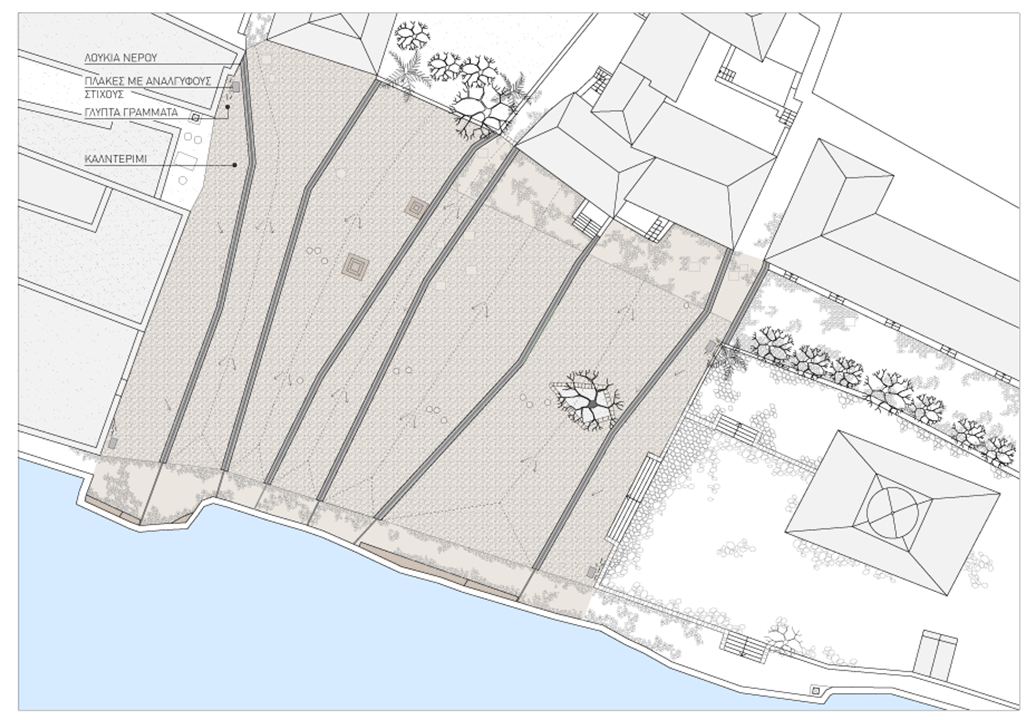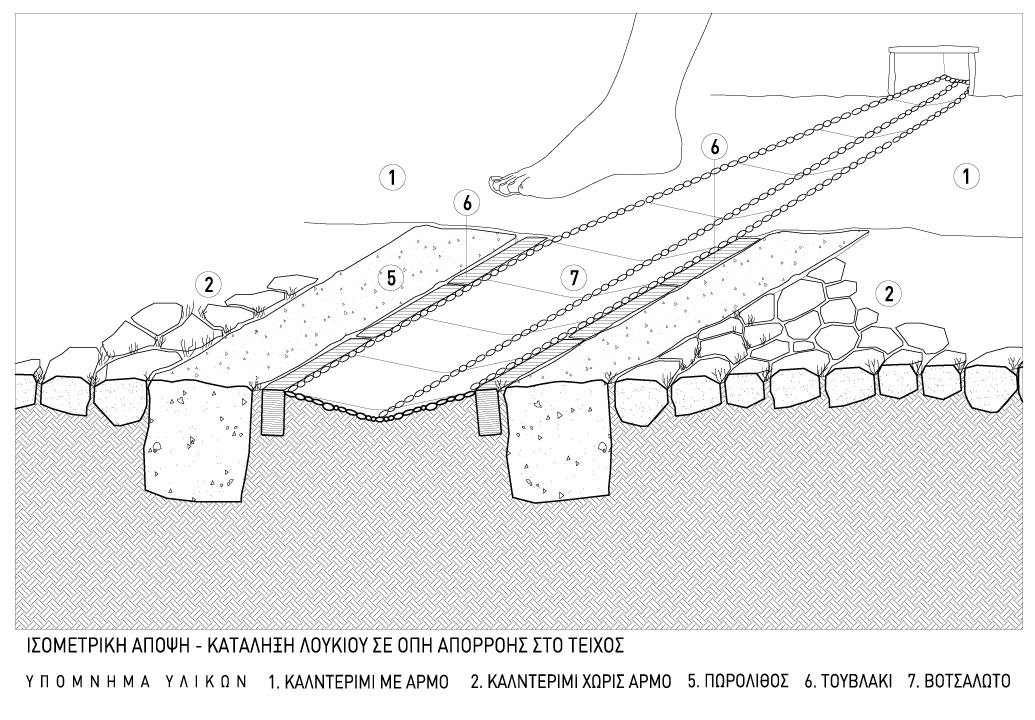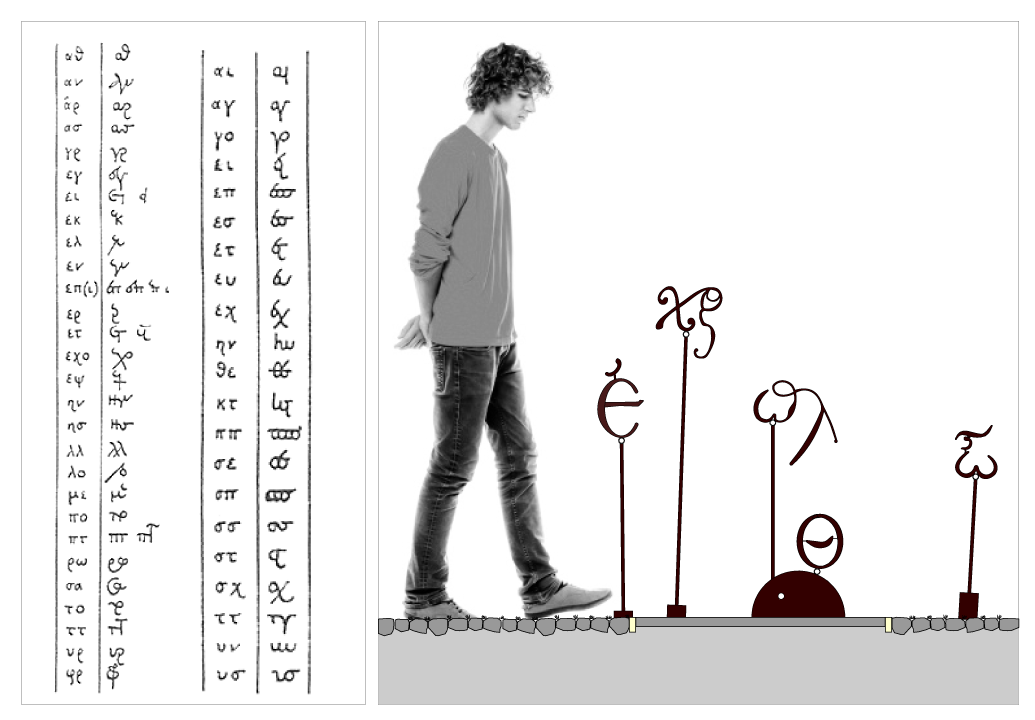WATER PATHS
Public square, Monemvasia
On Tuesday the 17th of April 2012 at precisely 12:37 pm three people met on Chryssafitissa square, in Monemvasia. It was the architect, the archeologist and the vice-mayor attending the first meeting for the design of the square. Before starting the discussion, they looked at the vast undefined expanse surrounding them: soil, mud, dry weeds, debris and piles of stones. Despite those, the unobstructed frontal relationship with the sea, the sky and the wind formed the ingredients of a strong experience.
A question came up: “If the square is paved, how will the rain water be drained?”
A few months later the architect answered: “The paving pattern and topography of the square will be defined by carved drain paths and ridge lines, which will gather the water and send it out through holes in the fortification walls. This way, the paving pattern will maintain an organic relationship with the square and will express a vital need.”
The drainage lines were drawn on the square in a loose zigzag fashion in order to follow the most efficient inclined route and to ensure water flow with no stagnation as well as to avoid manholes and existing wells. The square was thus divided in six almost equal fields, each with a ridge line in the middle and drainage lines on either side.
Traditional paving materials were chosen. The larger surface of the square would be laid with stone pavers kept tight together with earth. This would encourage the growth of small plants in between the stones and would give the square a more natural appearance. The drainage paths would be lined with slender limestone slits, solid brick slits and pebble mosaic for the curved part, in the center. The pebbles were chosen to give the visual impression of water flowing.
The visitor, upon traversing the square, would walk over gentle consecutive stone “waves” and pebble “streams”.
Together with the paving, a series of small installations were proposed. First, four slabs of stone were to be placed in the four corners of the square, flush with the stones. A few verses from the poet Yannis Ritsos would be engraved on them. Second, a series of linear steel rod sculptures would be inserted next to the poetry, inspired by Byzantine calligraphy. Finally instead of benches, a series of large cannonballs could be dropped randomly on the square to act as seats for visitors.
The census up to now: 5 involved public institutions and ministries, 7 counsels for the permit, 9 drawing revisions, 19 meetings with public servants, 28 supervision visits, 145 phone calls, 189 emails.
